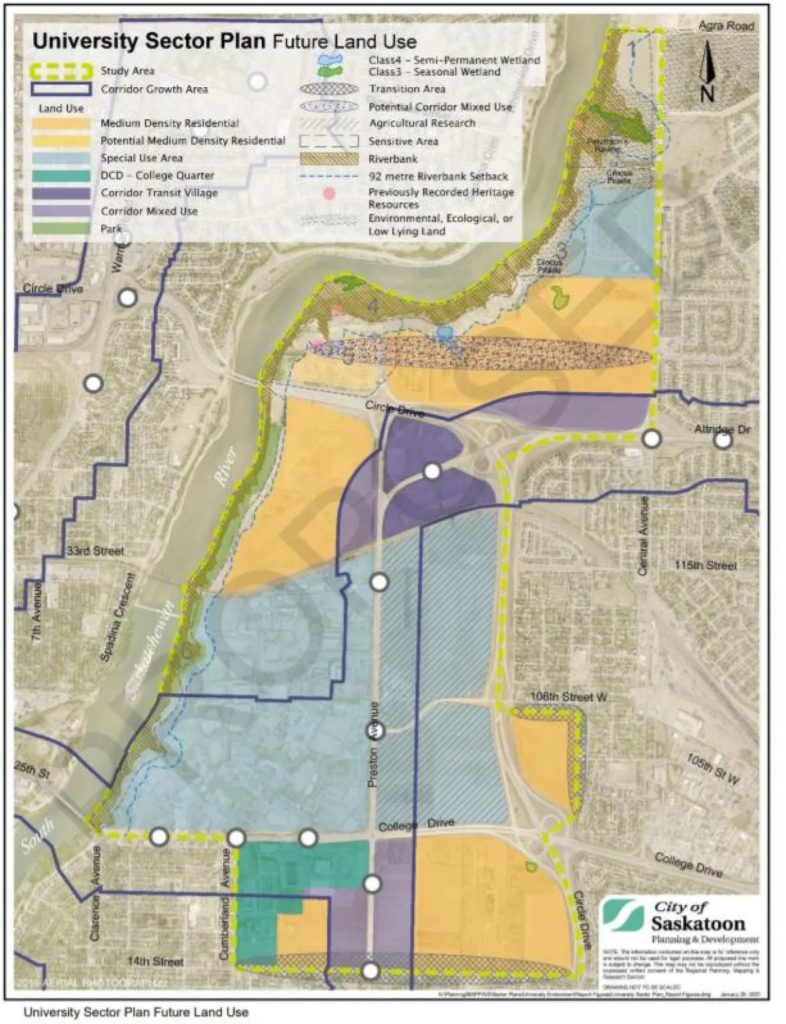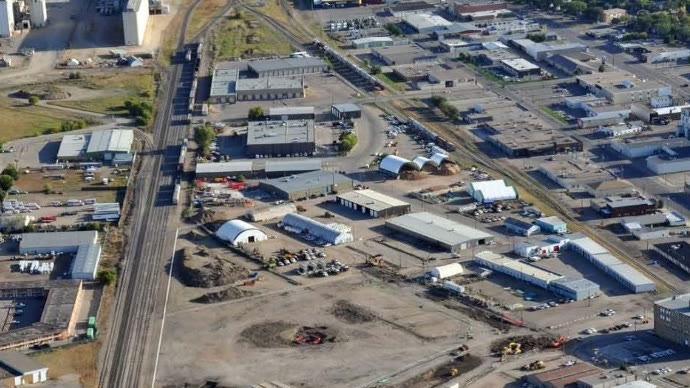In Summary: The City of Saskatoon needs to prioritise developing the environmentally and fiscally sustainable University Sector neighbourhoods over disconnected greenfield developments. Additionally, the city should completely cancel the development of the University Heights #3 neighbourhood.
Walking Saskatoon spends a lot of time advocating for the retrofitting of pedestrian infrastructure into existing neighbourhoods. What if we didn’t have to?
The true walkability of a city is determined well before any concrete is poured or houses built. Where neighbourhoods are located and how they are designed are by far the biggest influences on transportation choices made by residents. The walkability and sustainability of a city follow inexorably from the area and neighbourhood master plans developed by city planners and housing developers years before construction.
The City of Saskatoon is currently at an important crossroads when it comes to choosing which new neighbourhoods to develop next. Saskatoon is in a unique position for a North American city, in that there are significant amounts of undeveloped land near the centre of the city’s geographic footprint. Critically, these lands are not brownfield or greyfield industrial plots in need of expensive remediation. In addition, the University of Saskatchewan has decided to relocate its research fields and endowment lands outside of the City. The lack of any serious manufacturing history in the city, combined with the University’s massive land holdings have given the City the chance to develop new, truly walkable neighbourhoods close to existing services.

City of Saskatoon University Sector Plan
To increase walkability in Saskatoon, developing the University Sector Plan (USP) neighbourhoods need to be the absolute first priority for the city. They are substantially served by existing road, pathway, sewer and water infrastructure, making them a lot cheaper for the city to develop than greenfield neighbourhoods. Not only is it cheaper for taxpayers, but the sector’s proximity to the University, the Meewasin Valley, North End Industrial and Downtown makes these neighbourhoods ideal for walking and biking. More active transportation means further savings for the City on transportation maintenance cost, while improving the quality of life and health of neighbourhood residents. The University explicitly mentions active transportation as a primary design goal of the University sector neighbourhoods, ensuring that their central location won’t be wasted with car-centric design.
Another infill neighbourhood the city should prioritise for development is the North Downtown/Idylwyld corridor. The area’s location, bridging North Downtown with the Saskatchewan Polytech campus, makes it a prime candidate for student residences and other Sask Poly expansion. The North Downtown area master plan was developed by the city ten years ago, but it clearly has no momentum. This is an opportunity to replace the current plan with a more student-focused one. Replacing the thousands of daily car trips made by commuting students with a walkable route to campus would be a major benefit for both the students and the city.

North Downtown Industrial
While new infill neighbourhoods and infill in existing neighbourhoods should clearly be preferred for priority development, it still may not be enough to house a population of 1 million by 2050, if those projections come to pass. This means we will have to build greenfield neighbourhoods, but we must choose ones that integrate well with the city’s active transportation plan and are environmentally sustainable.
One planned neighbourhood that clearly fails that test is the upcoming University Heights #3 neighbourhood. This neighbourhood is part of the University Heights sector development, which is in the process of building out several neighbourhoods in an environmentally sensitive prairie wetland area. In addition,the Province is planning to build out a major highway through the area, further compounding environmental and financial damage. The last area to be developed(UH#3), is the worst environmental offender of all, planned right on top of the Northeast and Small Swales, two locally and regionally important environmental areas. This is the kind of damaging greenfield development that can be easily cancelled in place of further emphasising the fantastic infill opportunity Saskatoon possesses.

Links:
City of Saskatoon North Downtown Master Plan